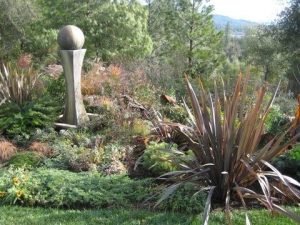Just as there are many wonderful benefits to finding that right companion in life, there is also something special and fascinating about companion planting. Plants that assist each other to grow well, plants that repel insects, even plants that repel other plants are all part of the gardening world that has never been fully explored.
Cornell University advises trying some of the following combinations that folklore says are effective. Observe the effects carefully and document your observations. Create your own experiments and share your results. “Testimonials that are shared by many observers often turn out to be valid.” Vegetable gardeners may find that companion planting provides many benefits, including protection from pests.
For instance, a major enemy of the carrot is the carrot fly, whereas the leek suffers from the onion fly and leek moth. Yet when leek and carrots live together as companions, the partner plants’ strong and strangely different smells repel insects from laying their eggs on neighboring plants. Even when plants are affected by diseases, a mixed plant culture can usually reduce the problem.
Wild plants also play a vital part in the plant community. Some have the ability to collect trace minerals from the soil. They actually can store in their tissues up to several hundred times the amount contained in an equal amount of soil. These plants, many of which are considered weeds, are useful as compost, green manure, or mulch.
An entirely different type of community life is that of a fruit and nut trees. For many of this group, the choice of good companions is not only helpful but essential. Have you ever experienced the disappointment of having a beautiful fruit tree blossom, be visited by bees, and yet fail to bear? There is a reason of course, and it lies in pollination-companion planting.
Here is a brief list of some of the many possible combinations of companion plants that you may want to try:
- Dill and nasturtiums both make good companions for squash and cucumber because they repel squash bugs and attract beneficial insects.
- Sweet corn does well with potatoes, peas, pumpkins and squash (corn, legumes, & squash are the traditional “Three Sisters”).
- Sow two or three radish seeds in cucumber hills to protect against cucumber beetles. Do not pull the radishes, but let them grow as long as they will.
- Lettuce grows well with strawberries, cucumbers and carrots.
- Pumpkins grow well with corn, but pumpkins and potatoes have an inhibiting effect on each other.
- Because of its saponin content, spinach is a useful pre-crop and does well planted with strawberries.
- Tomatoes dislike cabbage, potatoes and fennel, but will protect asparagus.
And last but not least, is garlic. Garlic is often recommended as effective control for many insects. Try this recipe from Golden Harvest Organics: Take 3 to 4 ounces of chopped garlic bulbs and soak in 2 tbsp. of mineral oil for a day. Add 1 pint of water in which 1 tsp. of fish emulsion has been dissolved. Stir well. Strain the liquid and store in a glass container. Dilute, starting with 1 part to 20 parts water, and use as a spray against your worst insect pests. NOTE: Do not spray any oil-containing spray when the temperature is above 80 degrees. It will cause damage to the plant.
Gardening questions are answered FREE for the asking; give a Master Gardener a call at the UCCE Tuolumne County Master Gardener Hotline at 209.533.5912 or email mgtuolumne@ucdavis.edu
Betty Hensley is a long-time Tuolumne County Master Gardener who grows an abundant vegetable garden.


